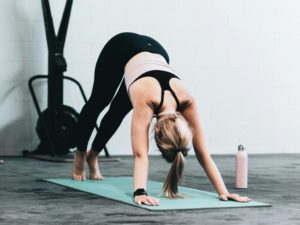Are Sit-Ups Too Easy? Here Are Some Amazing Sit Up Variations to Try
Sit-ups can be a very good exercise, designed to train your core. They are simple, effective, and require no additional equipment, however, they may be too easy for some individuals. These sit-up variations can be a great option if that’s the case for you.

Here is your guide to amazing sit-up variations. Learn the benefits of a sit-up, common mistakes individuals make when performing a sit-up, and how to make sit-ups easier or harder, depending on your skill level.
What is a Sit Up
A sit-up is an abdominal muscle exercise. They are straightforward, yet when done correctly, can help increase the strength of your core and boost spine flexibility. Sit-ups can also help define ab muscles and help to stabilize your body.
Sit-ups Target the rectus abdominis, the long muscle that makes up your six-pack. It also works your transverse abdominis and activates the internal and external obliques. This makes sit-ups an exercise that targets your core in its entirety.
Benefits
As stated above, sit-ups target the entire core. It’s important to strengthen the core as it is responsible for the stability of your body. Good core stability is vital for everyday activities and can help prevent injury when you are doing other exercises or general movements. Good course stability is also a great way of preventing pain. For example, the most common pain in individuals, low back pain, is usually caused due to a weak core. When your core is weak, lower back muscles activate to overcompensate for this issue, which can lead to injury.
Sit-ups also improve your spinal flexibility, which will help increase your range of motion and mobility in the future. This can also help reduce back pain. Plus, this exercise can also strengthen hip flexors, which are the muscles responsible for bending at the hip and lifting your legs from the hip. These hip flexor muscles are used in everyday activities such as walking.
Learning how to do a sit-up properly is the first step in gaining these benefits.
How To
A sit-up should be done on a yoga mat or comfortable surface. This will help prevent injury to your tailbone and can add a lot of comfort while doing the exercise. If done on a hard surface, this may cause bruising and spinal discomfort.
First, lie down on the floor face up, bending your knees so that your feet are on the floor and your knees are pointed to the ceiling. Next, Cross your arms over your chest. Avoid placing the hands behind the head as this may cause neck pain. Engage The core by taking a deep breath and drawing the belly button to the spinal column.
Use your ab muscles to lift your back and shoulders off the ground while keeping your hips and tailbone pressed into the floor until you are upright. Slowly lower yourself back down to the ground. Once you’re on the ground, re-engage the core and begin another rep.
Sit Up Variations
Here are some useful sit-up alternatives if the common sit-up is way too easy for you. If you can do one set with 30 reps, and not be tired, then it may be time to try out some harder variations.
Weighted Sit Up
Weighted sit-ups are a very common sit-up variation that can make a normal sit-up much more challenging. These are done by adding weight to the regular exercise. Simply get into a normal sit-up position and be sure to carry a dumbbell, kettlebell, or any sort of weight close to your chest. Weighted sit-ups provide additional resistance, making the workout more challenging for your abdominal muscles.
Remember to start light, adding 5 or 10 lb before increasing the weight. This will help prevent injury. Remember, this is not for beginners. Trying weighted sit-ups too early may lead to injury, so make sure to only use this sit-up variation once your abdominal muscles can carry the extra weight. Ensure that you maintain a good grip on your weight and keep your feet under a bar or have someone hold them to make sure you are stable.
Inclined Sit Up
An incline sit-up is a very beneficial variation. An incline sit-up adds a greater range of motion, meaning you can move further in the exercise. It leverages gravity for added resistance. The sharper the incline, the more your abdominal muscles have to work to lift yourself upright.
One issue with an incline sit-up is that you will need an incline bench to perform them. These benches have a support bar or foot brace, which allows you to hook your legs under and keep you stable. The angle should be between 30 and 45°. All the same basics of a regular sit-up apply. Keep your core braced and lift yourself into a seated position. Slowly lower back down and repeat.
Hanging Sit Up
Are the most intense sit-up variation. They require you to hang upside down and perform a sit-up. These are also called hanging raises. Your arms should be crossed over your chest and you lift your upper body upwards by contracting your abdominal muscles. Then slowly lower down until you are simply hanging upside down again.
A major issue of a hanging sit-up is that you may feel light-headed due to blood rushing to your head as you hang upside down. Plus, as you become tired, it becomes more likely for your legs to slip, causing you to fall. These hanging sit-ups are honestly not a great option, even if they are the hardest variation. There are just too many factors that can lead to injury when you are in a hanging sit-up position.
The Takeaway
Sit-ups are a great core exercise, but there can be a point where they become way too easy. In these cases, you should use sit-up variations to make the exercise more challenging. These variations include weighted sit-ups, inclined sit-ups, or even a hanging sit-up.
Remember, in any exercise, you should keep your core engaged and breathe through the workout. Even though a hanging sit-up is the most difficult variation, it is not recommended because it is very easy to slip and become injured. You can gain many benefits from an incline sit-up or even a weighted sit-up. Make sure you go slow and cater to your own fitness level.
Remember that health comes from within. Eat nutrient-dense meals, exercise when you can, at least 3 times a week, and take care of your mental health. Daily habits become the building blocks for emotional, mental, and physical health. Take care of your gut health too! Learn everything you need to know about gut microbiota today for free here.





